Community Profile: Area Plays Up Quality-of-Life Issues As Another Economic Development Tool
Photo Gallery | Article
Photo Gallery - Mt. Vernon, Ill.
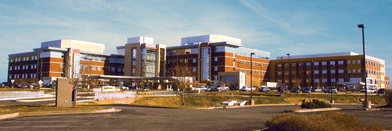
The $237 million Good Samaritan Regional Health Center opened in January. Photo Susan C. Thomson
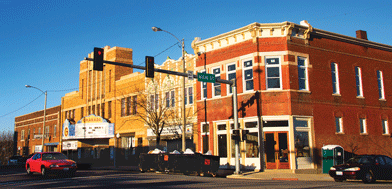
Much renovation is taking place downtown, as well as in other older parts of the city. Photo Susan C. Thomson
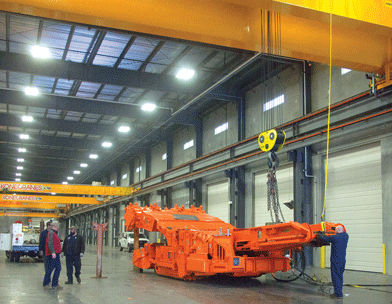
At Magnum Steel Works’ new $16 million plant, a “continuous miner” that was assembled there is inspected. Photo Susan C. Thomson
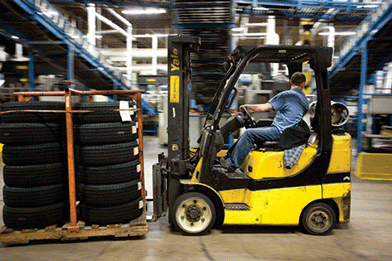
The largest employer in town is the Continental plant, where truck and car tires are made under the Continental and General brand names. Photo by Continental Tires the Americas

If there was any doubt that Mt. Vernon is a crossroads city, this collection of signs at an interchange exit drives home the point. Photo by Susan C. Thomson

A gallery at the Cedarhurst Center for the Arts, the main cultural attraction in the area. Photo by Susan C. Thomson
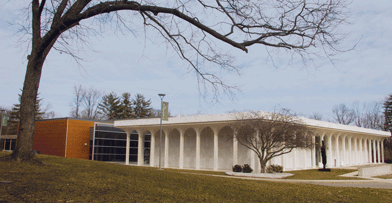
The museum, surrounded by a sculpture garden, drew 55,000 visitors last year. Photo by Susan C. Thomson
The 2010 U.S. census was a reality check for Mt. Vernon and surrounding Jefferson County, in the middle of Southern Illinois. Results, released in early 2011, revealed population declines of 6 percent for the city and 3 percent for the county as a whole over the previous decade.
Ironically, the decade ending in 2010 had been one of substantial job growth. It was led by the town's major employers, primarily a tire-maker whose successive expansions created jobs by the hundreds. Employment also grew steadily at a drug store chain's distribution center and in the city's vibrant health-care sector, made up of two hospitals and a number of off-site medical offices and clinics.
Obviously, people have been working in town but not living there, but why?
"We're in a rural economy, and a rural economy means labor can come from 45 or more miles away," says Jo David Cummins, president of Mt. Vernon's Community First Bank. "People don't move into town; they commute back and forth."
With a limited housing stock, mostly from the mid-20th century, the town offers few compelling options. According to a study done for the city last year, just to keep up with the new jobs, the city needs in the coming five years at least 360 new homes, mostly priced under $175,000. Cummins speculates that a chicken-and-egg situation developed, with risk-averse builders interpreting the population drop as lack
of demand.
To help raise its profile, reverse the decline and create a more vibrant and economically sustainable community, the city last year hired a branding expert. The result was the slogan "Mt. Vernon, Illinois: Creativity Redefined!" It has been combined with art into a logo that is now appearing on publications of the city, the county's Chamber of Commerce, and the local tourism and economic development agencies.
The slogan is a nod to Mt. Vernon's top creative attraction, the Cedarhurst Center for the Arts. This 90-acre expanse features a 60-piece sculpture garden and a museum permanently displaying late 19th and early 20th century American paintings from the collection of the local couple that bequeathed most of the property. The center, which also offers special exhibits, art classes and concerts, drew 55,000 visitors last year, two-thirds of them from out of town, says the executive director, Sharon Bradham.
In keeping with the branding effort's goal to lure more visitors, the city staged its first Fall Fest last October. At least 15,000 people came for the three-day weekend of music, food, arts and crafts, says Brandon Bullard, the Chamber of Commerce's executive director. Another Fall Fest and several other special events are on tap for this year—first steps toward the "festival city" image the branding study suggested that the city seek.
Of the many ideas to come from the branding exercise, the biggest was redeveloping downtown's vacant National Guard armory into a "festival marketplace" with a mix of events and vendors unique to the Mt. Vernon area. Its feasibility is being studied, says a city councilman, Todd Piper, who describes the new "creativity" brand as something "to be earned over the years."
Quality of Life, Quality of Life, Quality …
The consultant's report presented branding as an economic development strategy. The report says "quality of life" is the "leading reason" businesses start in or move to an area in the 21st century. Location is now a secondary consideration, the report says.
In contrast, Mt. Vernon's location at the intersection of Interstates 64 and 57 was its primary economic engine in the late 20th century. The thoroughfares were connected in 1974, creating beelines from Mt. Vernon north to Chicago, south to Memphis, west to St. Louis and east to Louisville. That same year, the plant of Continental Tire the Americas opened with 150 employees. Taking advantage of what had become a natural location for distribution centers, the drug store chain Walgreens began operations in Mt. Vernon in 1990 with 175 employees and gradually expanded. The distribution center now services 700 stores in 10 Southern and Midwestern states.
The crossroads have also given rise to 12 hotels, with more than 1,000 rooms altogether. Bonnie Jerdon, director of the Mt. Vernon Convention & Visitors Bureau, says room nights have increased steadily in recent years. Last year alone, they went up 5 percent. However, only about half of the visitors stay more than one night. Jerdon hopes that the new branding campaign will persuade more people to stay longer.
Mary Ellen Bechtel, executive director of the Jefferson County Development Corp., welcomes the new brand as a supplement to rather than a substitute for traditional economic development. The latter includes tax credits and training grants from the state and property tax abatement and sales tax waivers from local governments. All of these incentives have been used in various combinations to attract new businesses to the area and help existing ones grow, she says.
Investing in Infrastructure
A heavy emphasis has been put on infrastructure improvements, too. On the west side of town, near the I-57 interchange that opened in 2009, plans call for a new high school, a 600-acre planned-unit development, the area's third industrial park and more medical-related facilities. The city and state are investing $9.5 million into public works in that area to make all the development possible.
"We use every tool we have in the economic toolbox" to encourage development and redevelopment, adds Mt. Vernon Mayor Mary Jane Chesley.
The city's tools also include tax increment financing (TIF) districts, where tax increases above an initial, fixed amount are dedicated to district upgrades. Of the four the city has created over the past five years, results have been most striking in the downtown district, where commercial buildings are up to a century old and many remain empty. Proceeds from the TIF have funded 40 building renovation projects, worth about $2.3 million, and have spurred another $5 million in private investment, the mayor says.
Little by little, a downtown master plan completed in 2006 is being realized. "It's been slow, but we keep moving forward," says Cyndy Mitchell, executive director of the Downtown Mt. Vernon Development Corp.
"I think downtown is the heartbeat of a city," says Chesley. As further signs of progress, she points to what she describes as the city's ongoing "quality of life" enhancements, including street repairs, park improvements, new bike trails and an out-door aquatic center that is due to open July 4.
Abandoned housing and other unused buildings are being demolished, and rental housing is now being inspected.
Meanwhile, the year began with, by Bechtel's calculation, up to 450 new jobs pending over the next three years. Of these, 350 are on tap at Continental Tire. The nonunion plant, which makes Continental and General tires, has thrived as the company has closed unionized U.S. plants. In January, it announced its latest expansion. It will cost $129 million and lead to 100 new jobs.
New Plant for Magnum
The remaining 50 to 100 new jobs are in the offing at Magnum Steel Works, a fabricating and machining shop specializing in repair of industrial equipment. Magnum started in 2005 with a handful of employees. In January, the company began moving its 56-person workforce from an outgrown 33,000-square-foot building into a new $16 million, 128,000-square-foot facility. President Jim Czerwinski says Mt. Vernon is an ideal location for his company, which counts the tire company and Southern Illinois' coal mining companies among its major clients.
New Hospital Facilities
Also in January, Mt. Vernon continued evolving into what Cummins perceives as "a health mecca." Good Samaritan Regional Health Center moved to a new, five-story, 142-bed, $237 million facility near the new interchange, almost double the size of its previous home. The extra space allowed for a large number of improvements. With the move, the hospital also created 100 jobs, says President Michael Warren. The opening came just months after Crossroads Community Hospital, also on the west side of town, completed its $23 million renovation and expansion.
A developer has bought Good Samaritan's former site and is tentatively planning to build housing there. City Manager Ron Neibert says the city is in preliminary conversations with two other potential developers who have other home-building projects in mind.
"We think we're on the right track," Bechtel says. "We think we can correct the decline in population, but it's going to take some time. We probably won't know until the next census."
Mt. Vernon/Jefferson County, Ill., by the numbers
| POPULATION FOR CITY/COUNTY |
15,236 (1) / 38,713 (1)
|
| LABOR FORCE |
NA / 19,895 (2)
|
| UNEMPLOYMENT RATE |
NA / 8.7% (2)
|
| PER CAPITA PERSONAL INCOME |
$33,747 / $33,546 (3)
|
| (1) U.S. Census Bureau, 2011 estimate. | |
| (2) Bureau of Labor Statistics/Haver Analytics, January 2013, seasonally adjusted. | |
| (3) BEA/Haver, 2011. | |
| Largest Employers | |
| Continental Tire the Americas |
3,200 (1)
|
| Walgreens Distribution Center |
1,475 (1)
|
| Good Samaritan Regional Health Center |
1,165 (2)
|
| Crossroads Community Hospital |
315 (1)
|
| Mt. Vernon City Schools |
257 (1)
|
| 1 SOURCE: Jefferson County Industrial Development Corp. | |
| 2 Self-reported |
|
Views expressed in Regional Economist are not necessarily those of the St. Louis Fed or Federal Reserve System.
For the latest insights from our economists and other St. Louis Fed experts, visit On the Economy and subscribe.
Email Us

